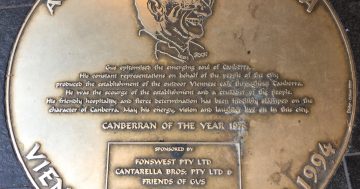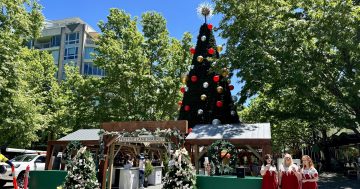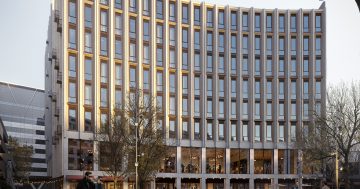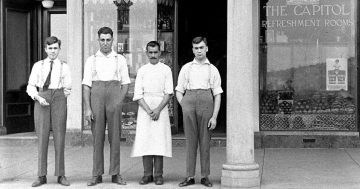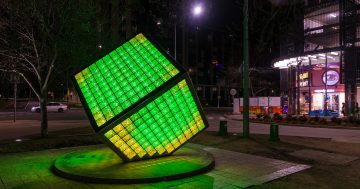
Several decades ago, the centre of Canberra provided a very different shopping experience. Civic was a series of pedestrian plazas with a small complex named The Monaro Mall. In 1989 this mall was enlarged to become the first Canberra Centre. There were howls of protest at the time about how the government’s deal to sell off land would result in a commercial venture that would block Ainslie Avenue.
In the end the property lobby won the day and the government sold the car park and part of the street (now there’s an idea – sell off more streets!). The Centre went ahead and the major axis from the London Circuit up Ainslie Avenue was no longer. Canberra had a box mall plonked right into the city’s commercial and social heart.
Years later, the ACT Government sold off the car parks to the west to allow the Canberra Centre to expand further (some things never change). Residents protested that Civic was designed to be a set of open plazas and that having an even larger big box mall would destroy the ambience of Civic, being a popular place to wander about and to shop for nearly everything including hardware. Again, the property lobby won the day (things really never change).

Small businesses also protested, as they were worried that the large mall would maul the surrounding shops. They were right. The open plazas have never been the same. Over the last decade there have been many closures and many lingering ‘For lease’ signs. Unfortunately, Garema Place descended into the centre for crime in Canberra.
Today the main pedestrian areas of City Walk, Garema Place and Petrie Place have loads of good things as a result of public spending on public art, landscape design, furniture and trees. That arm of the government is to be congratulated.
However, even allowing for the cold weather during these last weeks, the open areas are seriously devoid of people and activity. The whole place feels shabby. Even the officially sanctioned graffiti and painted artworks add to the desolation as they compound the unfriendly nature now prevalent around Civic.
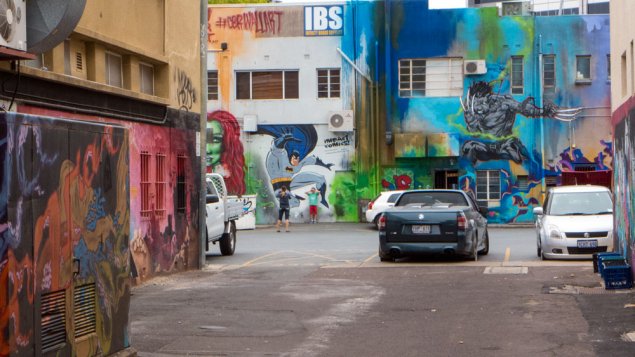
Back in the early 1970’s a new Big Idea confronted the government bureaucrats. Until then, cafés in Canberra (and indeed in most places in Australia), did not have outside tables. The bureaucrats were worried that if people were seated outside then flies could get into the food and pedestrians would be at risk if tables and chairs cluttered the sidewalks.
Gus Petersilka was from Vienna and could not understand why tables were not allowed outside. Rather than heeding the restrictions of the planning bureaucrats, he pursued his Big Idea and placed tables outside his café, Gus’s Café. The bureaucracy responded by raiding the place in the early hours and taking away all the furniture. It made for great headlines and the public responded in support of Gus. After more unbelievable episodes like that and more raids and lots of public protests about the stupidity of the planners, the politicians agreed to the radical step of having outside tables.
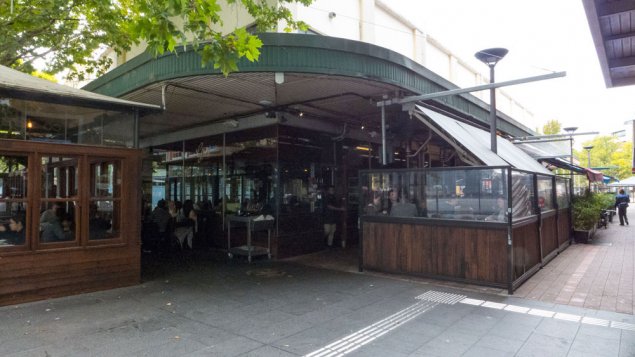
Next time you walk around Civic, think about the battle that Gus won and what Civic would look like if the planning bureaucrats had been allowed to maintain their precious planning legislation. There’s a plaque near Gus’s Café to honour him but it does not mention the early morning raids and the attitude of the planning bureaucrats to change (heard that before?).
In the end it was the growth in cafes, complete with outside tables (thanks to Gus) that brought life back into some areas of these plazas. However the people still flock into the big box and the outside precincts continue to struggle.
In recent years we have seen several special events staged in Civic in the hope of getting people back into the area. The trouble being that while these have been successful as social events, they have done little to encourage the daily shoppers away from the mall.
The government continues to do the right thing to make the open areas attractive but this has had very limited impact. Our politicians’ big problem is that the buildings themselves are overdue for refurbishment but that these are owned by finance companies that are not rushing to upgrade.
Civic has become an urgent urban planning problem for the ACT Government. The planning bureaucrats have seriously struggled to work out how to begin to address the problems their predecessors and the property industry have passed down to them. The best they have done is to fly in a continuous stream of international and interstate experts in the hope that someone will eventually drop that Big Idea.
This article is the first in a three-part series exploring Civic’s past, present and future.













